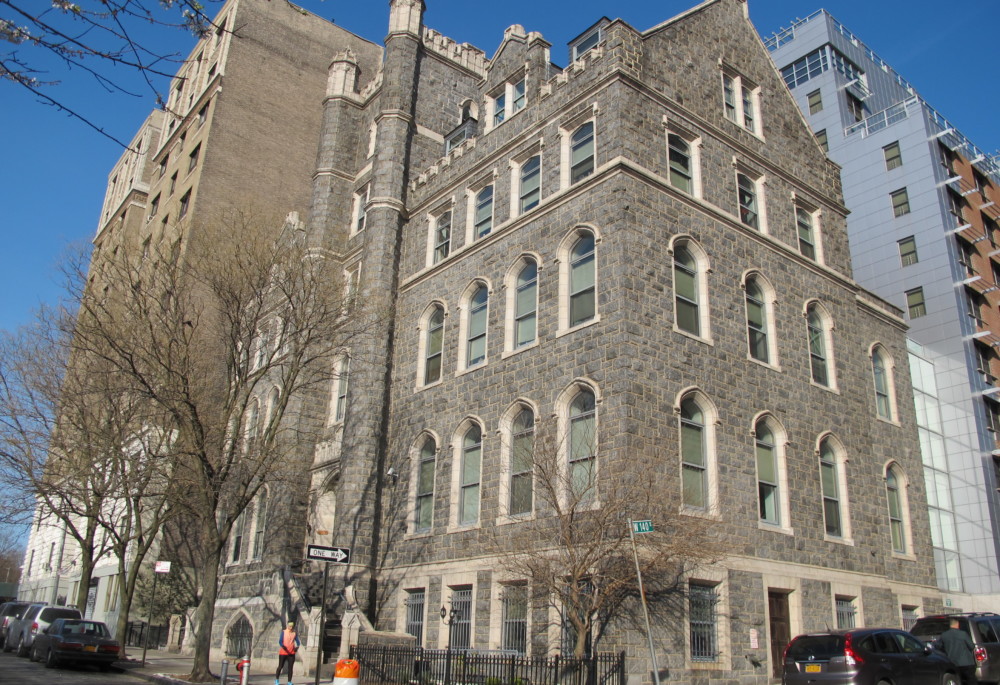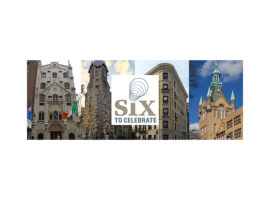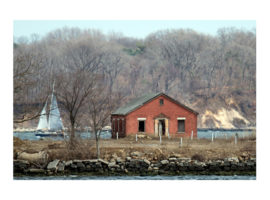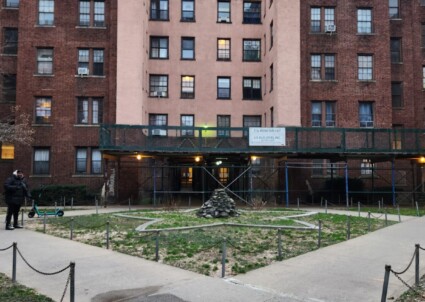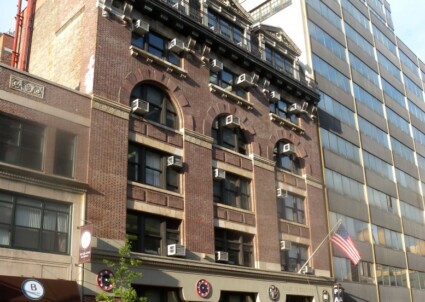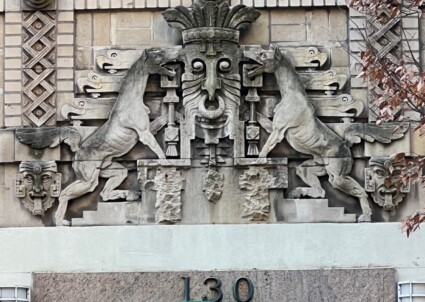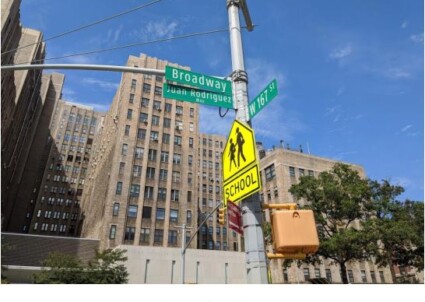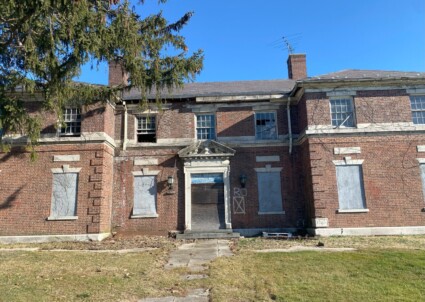West Harlem, Manhattan
Although European settlers had begun farming the area now known as West Harlem in 1625, the community was not formally incorporated as the village of New Harlem (or “Nieuw Haarlem” in Dutch) until 1658. By the time Richard Carman began purchasing farmland in the area surrounding West 152nd Street in the 1830s, roads had been extended into the neighborhood and country estates were established as summer retreats for the city’s elite. In the 1840s, development started to encroach on this pastoral landscape as the Croton Water Aqueduct stretched through the neighborhood on its way downtown, and Trinity Church acquired a large parcel of land to construct a cemetery. After the Hudson River Railroad established a stop at the foot of West 152nd Street in 1842, the thoroughfare became the nucleus of the newly named village of Carmansville.
Carmansville featured multiple residences, several churches, a hotel and a new headquarters for the city’s 32nd Police Precinct, which was linked by telegraph to the rest of the city. The construction of an elevated railway along Eighth Avenue in 1879 further tied Carmansville to the burgeoning metropolis to the south. While the elevated railways facilitated the speculative development of blocks of brownstones for the middle class in central Harlem, the heights farther west, then called “lower Washington Heights,” saw more gradual development. When the Joseph Loth & Company Silk Ribbon Factory, one of the few industrial enterprises in the community, opened its doors at Amsterdam Avenue and West 150th Street in 1886, its immediate environs consisted of truck farms and clusters of houses.
By the time the Interborough Rapid Transit (IRT) Company inaugurated subway service along Broadway with a terminus at West 145th Street in 1904, this scene had changed dramatically to one of elegant rowhouses constructed in styles ranging from the Queen Anne to the Dutch Revival, lining the streets between Amsterdam and Broadway. Marking the urbanization of the area, one of the last undeveloped portions of Manhattan’s street grid disappeared when the stretch of West 150th Street west of Broadway was finally ceded to the city and opened as a public thoroughfare in 1906. Residential development was accompanied by improvements associated with an established urban neighborhood, including the opening of the Hamilton Grange Branch Library in 1906, the extension of Riverside Drive into Audubon Park in 1911 and the completion of the Church of the Intercession in 1915. While the turn of the century brought an influx of African-Americans into central Harlem, transforming that neighborhood into a national center of black culture, West Harlem’s black population gradually increased into the 1920s and 1930s.
In the post-World War II era, West Harlem’s buildings were plagued by poor maintenance and abandonment as middle-class residents moved to the suburbs and those who remained faced poverty and institutional neglect. Despite these challenges, West Harlem residents took steps to strengthen their community’s identity and affirm its resiliency. In the 1970s, residents organized to advocate for the construction of Riverbank State Park atop the maligned North River Water Control Plant, while Arthur Mitchell located his newly established Dance Theatre of Harlem in a renovated garage at 466 West 152nd Street. Today, local organizations continue to fight to preserve West Harlem and promote its unique identity as increased development threatens this dynamic community and its architectural beauty.
